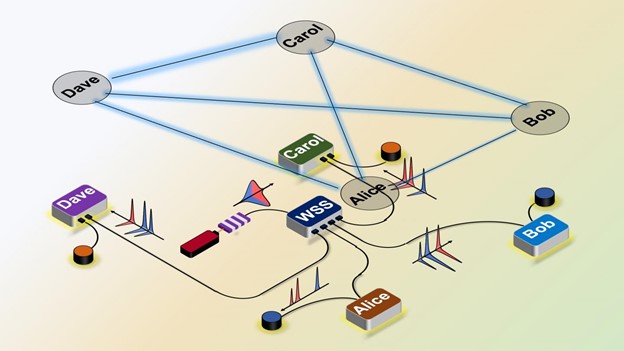
Switching on a Quantum Internet
Once quantum computers are ubiquitous, a quantum internet will need to be in place to communicate. Purdue University is addressing the challenge of developing quantum networks able to support more than a few users. Their research, published in Optica, could provide the groundwork for a large number of quantum computers, quantum sensors, and other quantum technology, making them ready for prime time.
Using a programmable switch to adjust how much data goes to each user by selecting and redirecting wavelengths of light carrying the different data channels makes it possible to increase the number of users without incurring additional photon loss as the network grows. When photons are lost, so is quantum information, which tends to happen the farther photons travel through fiber-optic networks.
Instead of adding filters each time a new user joins the network, engineers could program a wavelength-selective switch to direct data-carrying wavelengths to each new user, reducing operational and maintenance costs and gaining efficiency. The switch also can be programmed to adjust bandwidth according to needs, which has not been possible with fixed optical filters.
The switch also is capable of using a “flex grid,” similar to that classical lightwave communications now uses, to partition bandwidth to users at a variety of wavelengths and locations rather than being restricted to a series of fixed wavelengths. The team is now working on building larger networks using the wavelength-selective switch.
